Today’s business workflows are much more varied than they were just 15 years ago.
Where companies used to only have to manage desktop workstations when it came to their technology strategies, they now have workstations, laptops, tablets, and smartphones to consider, and their ability to access company apps and data from multiple locations.
This transformation in how we work has its advantages, which include higher productivity and the ability to access business applications when, where, and how we want to. But it also comes with its challenges, such as data security and administration of several endpoints which may have different operating systems.
In 2018, 62% of businesses experienced phishing and social engineering attacks.
If you’re a small business, how can you find the time to manage multiple devices and ensure their security? Most business owners are just trying to grow their company and don’t have an entire IT department to handle this type of thing.
That’s where umbrella platforms like Microsoft 365 can help. It includes several modern device services that simplify multi-device management and help put automated policies in place to keep your infrastructure protected.
Benefits of Modern Device Services in Microsoft 365
In the first half of 2019, cyberattacks against mobile devices rose by 50%, compared to the previous year. Mobile security has become a major concern and one that is causing many companies to play “catch up” when it comes to their IT security policies.
Businesses that use Microsoft 365 have an advantage over those that don’t because of all the mobile and app-targeted features that give them the ability to completely secure and easily manage all corporate and personal devices.
Here are the advantages you have when using Microsoft 365’s modern device services.
Mobile Device Management (MDM)
With a subscription to Microsoft 365, you receive Intune, which is a powerful mobile device management application. It helps businesses affordably administer either a company issued or Bring Your Own Device (BYOD) policy. The app makes it easy to control device access to business apps and data as well as keep track of and secure company-owned devices.
Remote management allows an admin to use a central control panel to do things like:
- Add or remove users and app permissions
- Lock or wipe a device
- Deploy updates and security patches
- Review access logs by device
- Manage iOS, macOS, Android, and Windows devices
- Implement security policies
Mobile Application Management (MAM)
Going beyond the device to the application, MAM allows you to secure mobile app access by a device, even if that mobile device is not enrolled in your Intune MDM program. Perfect for users who use their personal devices to access organisational resources.
When opening an app, such as email or SharePoint, users are prompted for additional authentication. If a device is ever lost or stolen, you can remove all organisation data from the Intune managed applications.
This adds another layer of security by allowing management of access at the app level, in addition to the device level.
Conditional Access
Another device security feature included with Microsoft 365 is Conditional Access, which only allows access to a business application if a user meets certain conditions.
Conditional Access policies allow you to automate certain security controls that keep your data safe from unauthorised access. For example, if a user was trying to access an Office 365 account from an IP address that was outside your country, you could institute additional security protocols, such as requiring multi-factor authentication.
Some of the signals that Conditional Access uses to determine access decisions include:
- Someone in a specific group
- IP location information
- Device type
- Real-time calculated risk using Azure AD Identity Protection
Policies can choose to grant access, grant limited access, block access, or require additional verification before granting access.
Device Compliance
Many mobile device management (MDM) solutions help protect organisational data by requiring users and devices to meet some requirements.
In Intune, this feature is called “compliance policies”. Compliance policies define rules and settings that users and devices must meet to be compliant. When combined with Conditional Access, administrators can block users and devices that don’t meet the rules.
Some of the rules that compliance policies can require include:
- End users use a password to access organisational data on mobile devices
- The device isn’t jail-broken or rooted
- A minimum or maximum operating system version
- The device to be at, or under a threat level
The device compliance feature can also be used to monitor the compliance status of devices across an entire organisation.
Windows as a Service
One of the services you receive with Microsoft 365 is Windows 10. With this OS, Microsoft introduced a new operating system servicing model called Windows as a Service (WaaS).
What this means is a more fluid roll out of Windows updates, which includes twice-per-year feature update releases. Windows 10 also has multiple update management tools incorporated to help businesses streamline and gain more control over their Windows update process.
The biggest way that Windows as a Service is different than how Microsoft traditionally handled Windows updates, is that updates come much more often (twice a year instead of every few years), which eases users into feature updates and allows businesses to take advantage of faster feature and security updates.
Simplify and Transform Your IT Infrastructure with Microsoft 365
Microsoft 365 offers multiple benefits when it comes to device management and security. Let NMX IT Solutions help you harness the power of this platform to drive better business workflows.
Contact us today to schedule a custom cloud consultation! Call 01628 232300 or reach out online.

